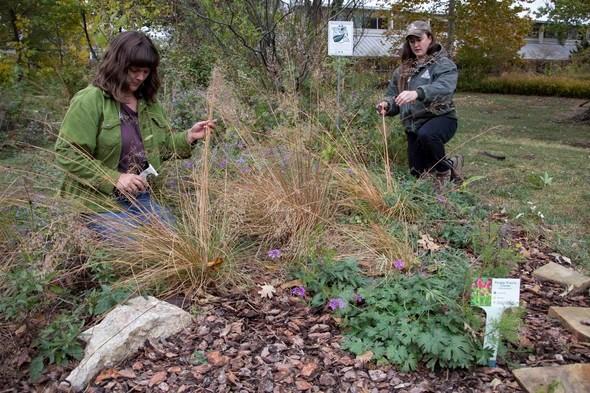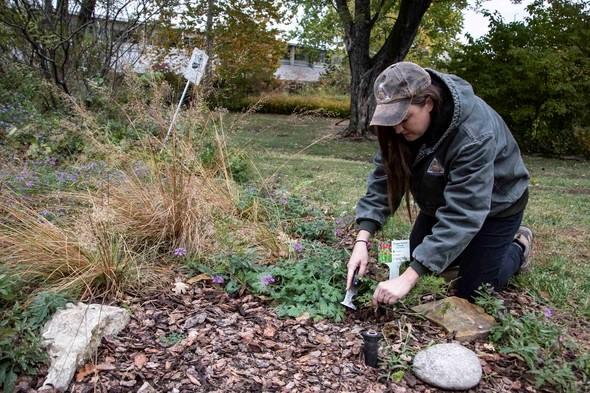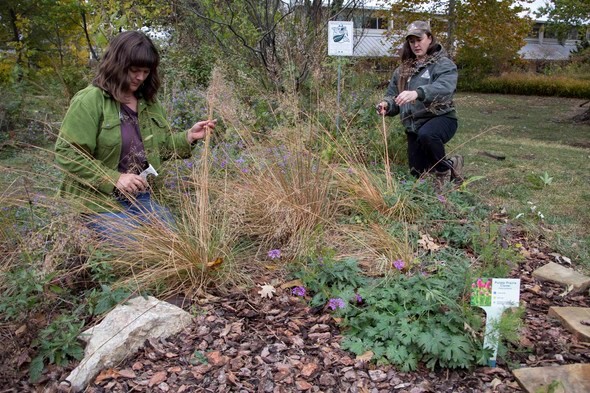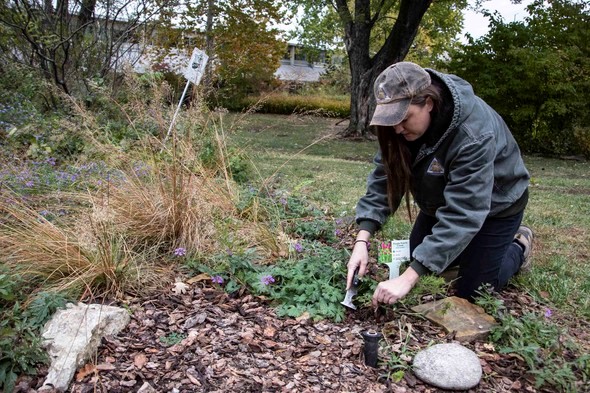
Xplor reconnects kids to nature and helps them find adventure in their own backyard. Free to residents of Missouri.


































Stay in Touch with MDC news, newsletters, events, and manage your subscription

Xplor reconnects kids to nature and helps them find adventure in their own backyard. Free to residents of Missouri.

A monthly publication about conservation in Missouri. Started in 1938, the printed magazine is free to residents of Missouri.




Kansas City, Mo. – Native plant gardens offer gardeners color and textures requiring less watering and maintenance than non-native plants. However, they are not maintenance free. Some tending in autumn can help desired wildflowers and decorative prairie grasses thrive the following summer. There are also steps that can help beneficial insects make it through winter, such as leaving leaves.
Autumn is a good time to start getting garden beds ready for next spring, said Alix Daniel, MDC native landscape specialist at the Anita B. Gorman Discovery Center in Kansas City. Daniel cares for trees, shrubs, wildflowers, and prairie grasses in Discovery’s Center’s extensive native plant gardens.
“Weeding is an obvious thing,” she said. “You don’t want the non-native invasive stuff to get started, especially the woody stuff.”
Sometimes even desired native plants need thinning, too. For example, wild bergamot, also known as bee balm, has lovely and fragrant flowers. But it grows quickly and may have crowded into garden soil once reserved for prairie blazing star, also known as gayfeather. New plants may need an assist to have room to grow and prosper when in competition with faster growing species. Native prairie plants that establish deep root systems sometimes need a few growing seasons to fully express. Also, a healthy relationship between soil microorganisms and root systems may need time to develop.
“With new gardens, some plants go through freshman flop,” Daniel said of new plants with tall stems falling over. “Also, don’t panic if you don’t see a wildflower bloom in the first year or two. A lot of them work on growing vegetative structure before flowering.”
Autumn is a good time to set native plant seedlings in gardens, she said. When winter arrives, some plants do well establishing themselves if seed is thrown on top of snow. The freeze and thaw cycles along with the moisture help seeds connect with soil. Some native seeds need freezing cold to prepare for spring germination.
Native plants can also serve nature in winter. Dried seeds atop flower stems are winter food for songbirds. Also, many small animals and insects use fallen leaves and plant stems as overwintering sites. Leaving leaves helps wildlife, said Carol Davit, executive director of the Missouri Prairie Foundation (MPF) and its Grow Native! program.
“Many caterpillars and pupae of moth and butterfly species overwinter in fallen leaves,” Davit said. “Insects roll up in leaves on the ground, emerging in the spring as perennial plants begin to break dormancy.”
Leaf litter adds nutrients to soil and provides food for decomposers such as millipedes, snails, and worms. They help create soil, but they are also important food for songbirds.
“Many cavity-nesting bees make their homes in standing stems of native plants,” said Felicia Ammann Brundick, MPF Outreach and Education Coordinator. “Solitary bees will burrow through the pithy stems of wild hydrangea, shining blue star, and many other native plant stems to overwinter.”
For more information about native plant gardens, visit https://short.mdc.mo.gov/Zc8. To learn more about the Missouri Prairie Foundation and the Grow Native! program, visit https://moprairie.org/ or send an email to outreach@moprairie.org.